March 30th 2023, Salinas Cruz, Mexico.
It’s not long after crossing the border from Guatemala into Mexico that it begins to dawn on me that this is a huge, like a massive, massive, country. No great revelation there seeing as Mexico has been more or less as it is now for a very long time but I just hadn’t dwelt on its size before arriving here and so when I did sit up and take notice, the enormity of the place came as a bit of a surprise. Put it this way, at two million square kilometres, Mexico is more than double the size of France and Germany combined. That’s a lorra, lorra country.
Where I crossed brought me into Chiapas, one of the 31 states that make up what is officially known as the United Mexican States, and I headed for the capital, Tuxtla. Looking at the map, it seemed like a modest sized place. In fact, there’s well over half a million people living here and, when you see it from above, it is a huge, sprawling place and if the stats said that two million people lived here, I’d not have questioned them. I got myself into a small hotel-cum-hostel by the main square, of which there is nothing much to report, unfortunately. The hotel had a deal with a next door vacant lot car park where I could leave the bike. The car park was behind chain-link fencing and a padlocked, see-through gate but was as secure as I was going to find. Next morning when I went to get the bike and go for a spin, I found my laptop sitting on the seat . . . where I had left it the night before. I have a routine on this trip: whenever leaving anywhere, I check where is my wallet, passport and phone. If I lost everything else, I could survive very well with just these three. The laptop lives in one of the bike panniers and I guard it too. Not this time however, but what a lucky escape.
The elevated view of the city came from heading into the mountain that forms one side of the Cañon del Sumidero, Tuxla’s main visitor attraction. Heading out of the city into the foothills, the urban area comes to a very sudden halt with the entrance to what is a national park. The road zig-zags its way up, pausing regularly at viewing points.
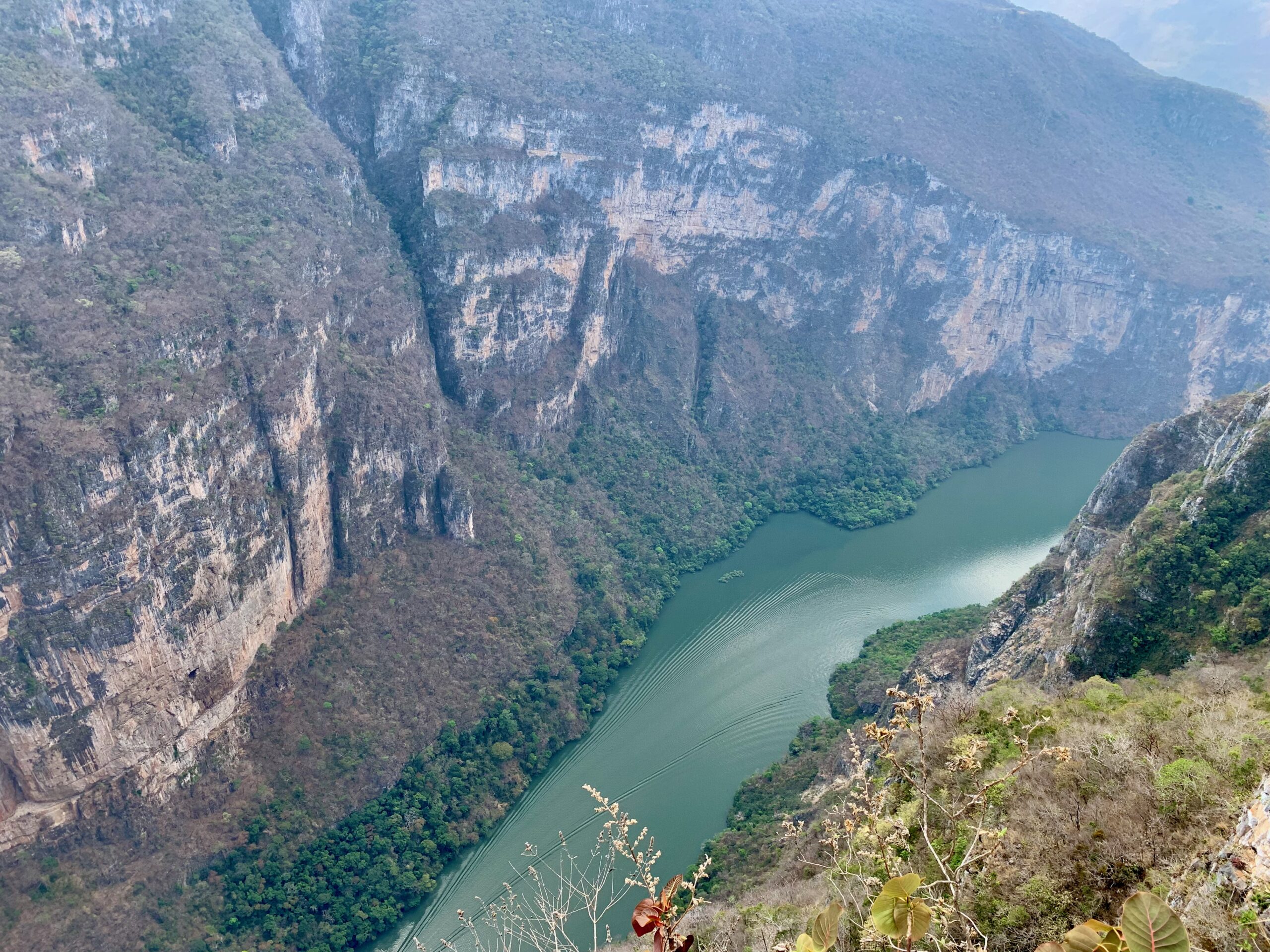
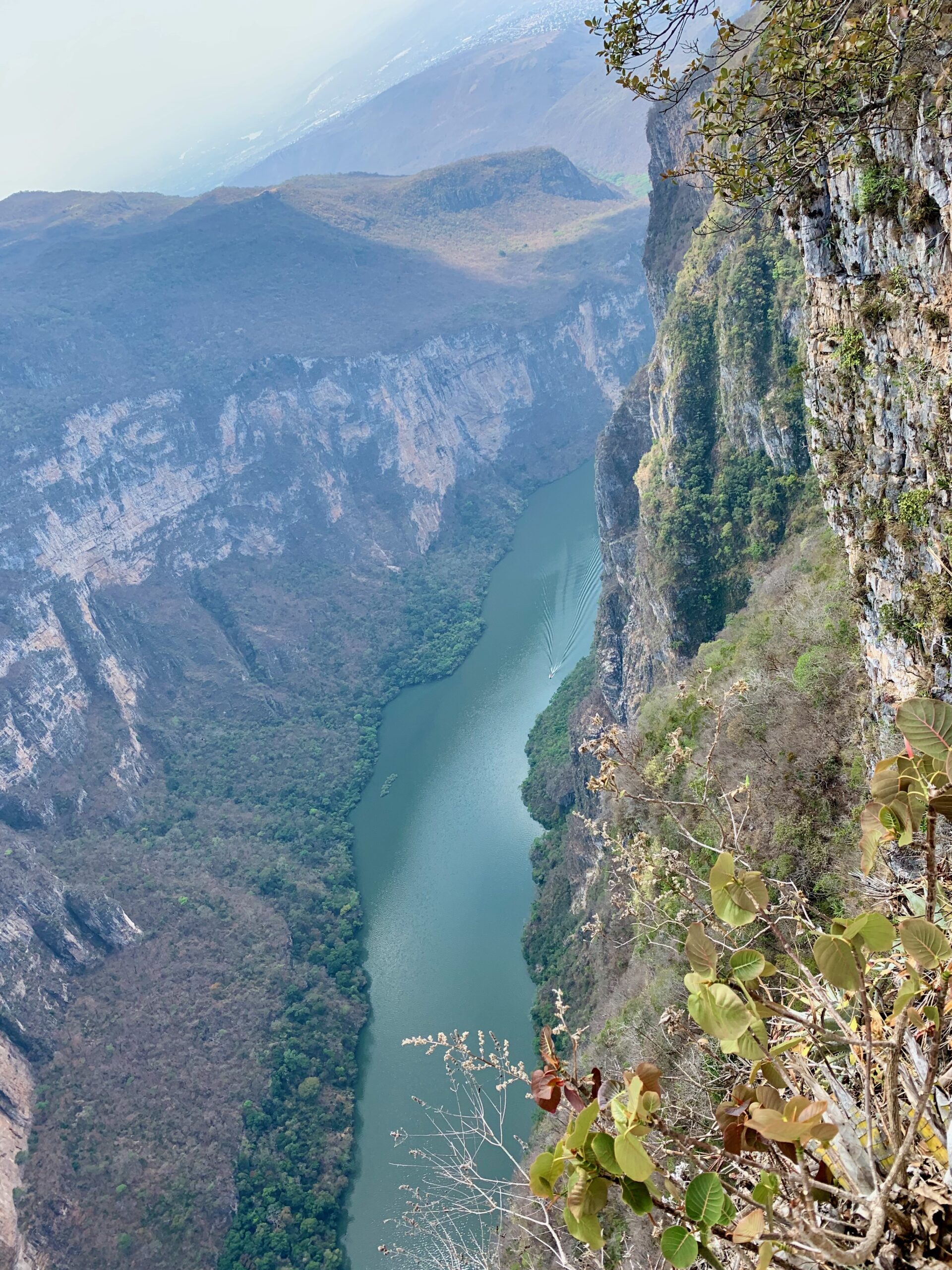
Soon, one is standing on the lip of one side of a canyon that is 1,000 meters high with near vertical, sheer rock face escarpment sides. A river, the Grijalva, flows through it for 17 kms like a giant snake. It is 80m deep in places and, from above, looks to be about 100 meters wide. The canyon is about the same age as the Grand Canyon in the US — that is, about 35 million years old, give or take — and is essentially a tear in the earth’s crust that has been deepened by river erosion. At the northern end of the canyon, there’s a hydro-electric dam.
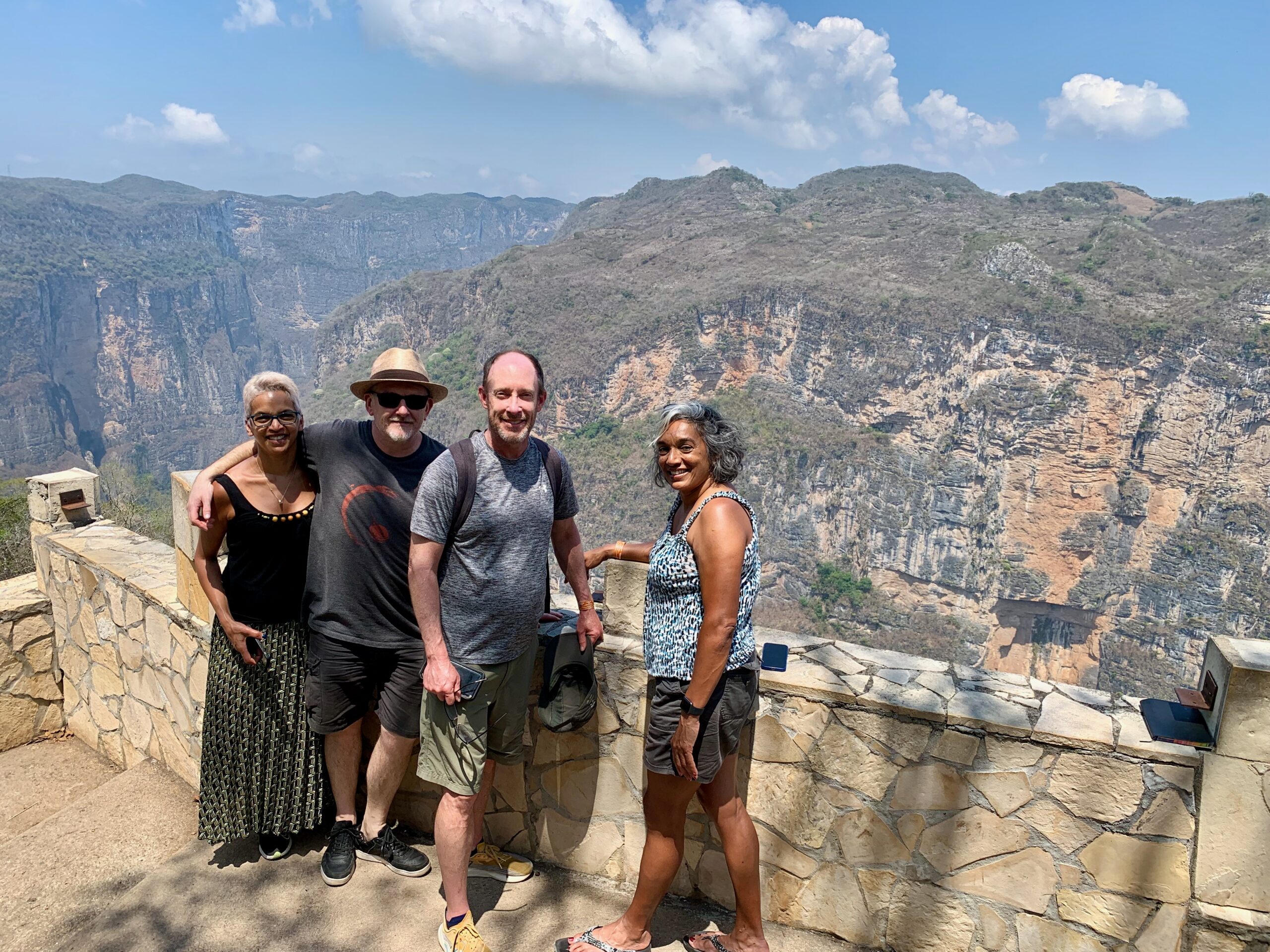
The river is heavily polluted from the wastewater from over half a million upstream inhabitants getting into it, along with rubbish, mainly plastic. Every year, some 5,000 tons of garbage is fished out of the river, the fourth most polluted in Mexico. Thankfully, one doesn’t see it from 1,000m above. I peered over the edge along with Mark and Odette Nolan from Southampton and Paul and Charlotte Reisch from Los Angeles. At one of the viewing stops, they told me about a tightrope walker who traversed the gorge, apparently successfully, but a parachutist wasn’t so fortunate when his ‘chute failed to open and he plunged to his death. It’s easy to see the attraction to daredevils: the rockface sides are extraordinary — fossil-laden limestone walls, buckled out of shape by movements in the earth’s crust and stained orange in places by leaching.
Next day, I rode on, heading towards Oaxaca, capital of the same name next state. Leaving Tuxla, the road soon entered a large plane between encircling mountains. The air was extremely hot — I would guess degree-wise in the late 30s — and the land was bone dry with quite a lot of sand. There was some cattle — scrawny looking beasts, snuffling in the dust and eating dried grass that looked about as nutritious as cardboard. There was some evidence of crops but the whole place had the look of somewhere just about hanging on. . . I wondered how much of a temperature rise, with maybe a decade of drought, would it take to turn it into desert. Not much I suspect.
On the road into a place named Cintalapa de Figueroa, there was the arresting sight of a large sculpture of a traditional Mexican horseman riding a horse rampant. He’s wearing chaps and a big sombrero and very much looks the part. Behind him was a hotel and restaurant, named Sonia Miriam, which has a sort of Thelma and Louise feel to it. I rode past, thinking I really should stop and get a photo of all that but my attention was distracted by, a few feet further on, a one-legged man standing on a traffic calming hump in the middle of the road, holding out a plastic beaker in the hope drivers slowing down would drop money into it. It’s really not possible to do anything in such circumstances when riding a bike and so I passed him. But almost immediately, I thought “Jesus, you can’t just go past a fellow like that and do, or say, nothing.” And so I stopped, turned around and went back to him, pulling over to the side of the road and dismounting.
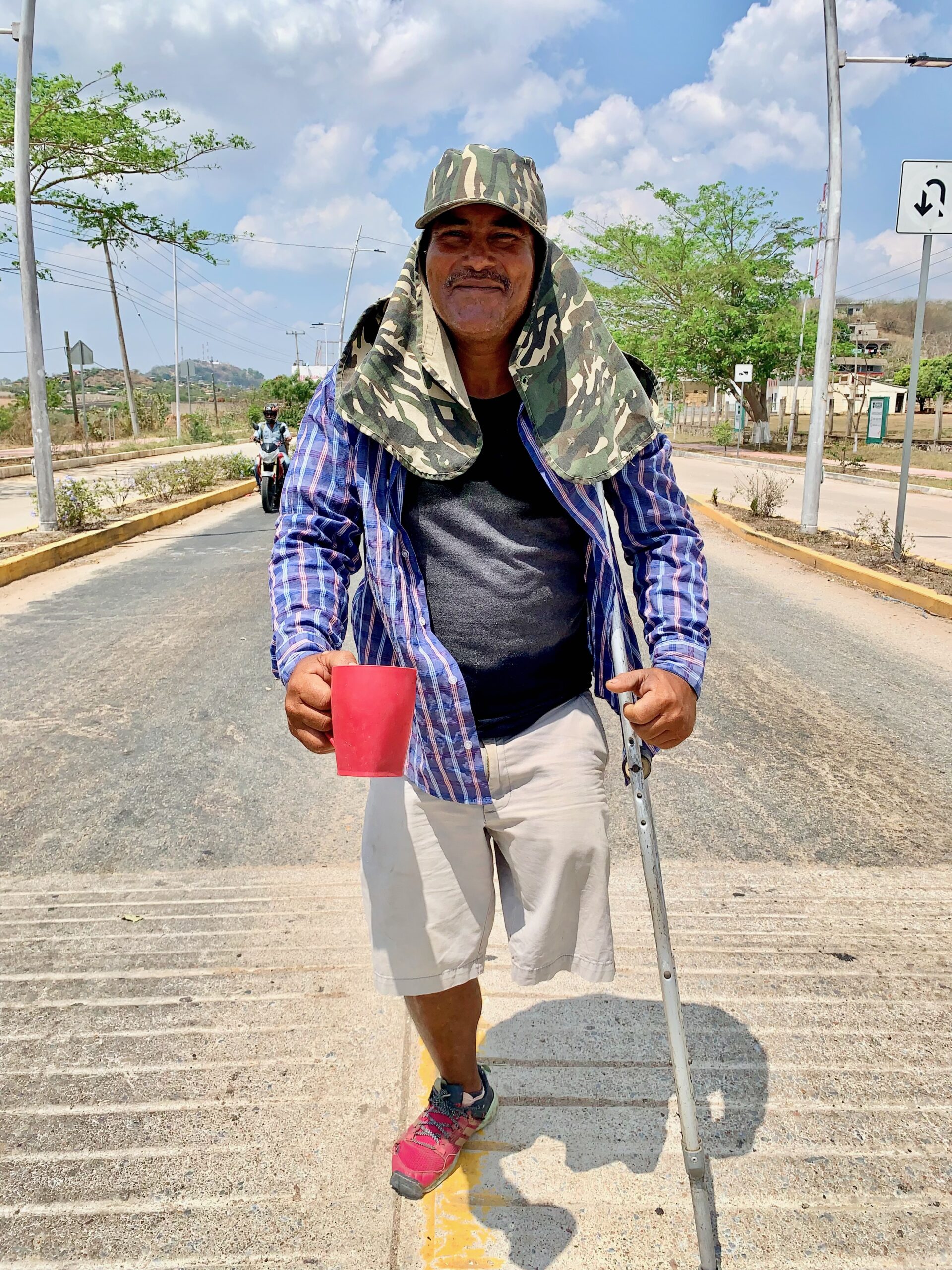
His name was Eri, and I’d guess that he was in his mid to late-40s. His left leg had been amputated well above his knee. He had put one crutch down at the side of the road, and hobbled on the other into the middle, balancing himself as best he could. This allowed him hold the beaker in his right hand, stretching it hopefully to motorists as they passed in either direction, slowly navigating the road bump. He had a hat with floppy sides covering his neck and shoulders to protect himself from the sun.
Most cars drove past but some lowered their windows and dropped coins into the beaker. I put some money in and chatted briefly with Eri. He was incredibly smiley, warm and cheerful man, standing there hopping continually to keep upright. Could I take his picture? Of course, he said, doing a little dance and laughing.
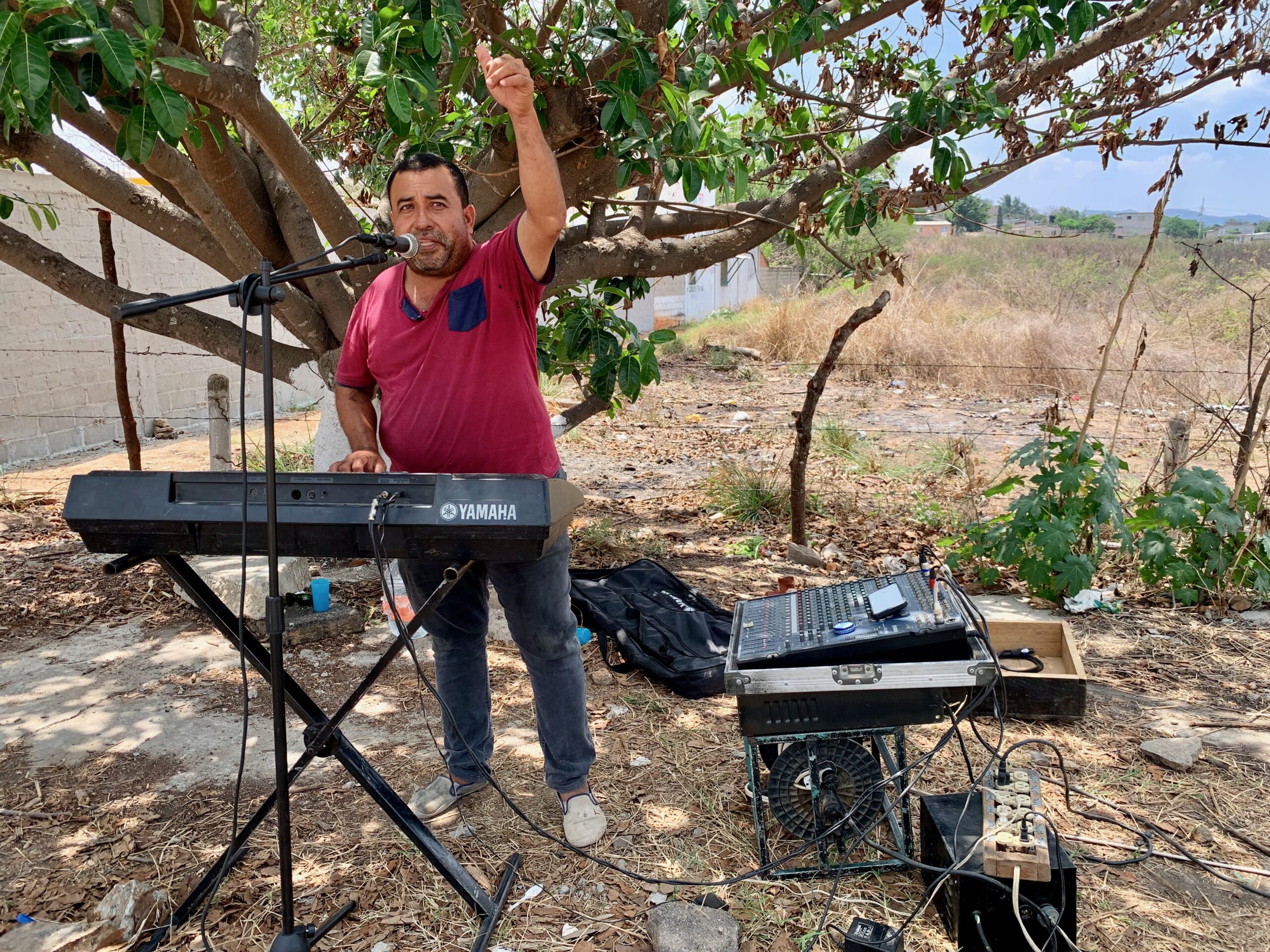
At the side of the road, under the shade of a bush, his pal and accomplice, Gabriel, banged out tunes on an electric piano, aided by a loudspeaker and microphone. Between the pair of them, they were quite an act.
I went back to the statue to get that photo. On the plinth, there was a poem, called The Zandunga. Zandunga is music tasted through food, an intoxicating mix, apparently, of stew, mescal and wine. It was not immediately obvious why this poem was associated with your man on the horse but there you are. (Perhaps it was related to Sonia Miriam’s great food…) The poem, according to such translation as I can source, is about someone dying and the zander moaning inside them. But when the longed-for day arrives (death, I assume), “when with a compassionate and rigid finger I finally close my eyes, “play the Zander [and] if I don’t wake up “give me a rest because I’ll be dead”.
I rode on, passing en route a vast jail near Lázaro Cárdenas. It was actually in the middle of nowhere — nothing immediately around it but scrub and land that was, as far as I could tell, largely unused for agriculture. There were lookout towers and chain-link fencing topped with razor wire and various buildings that appeared to be courts or tribunals of some sort. There was the usual collection of visiting families one find outside jails everywhere, people who have made often long journeys to visit an incarcerated loved one. How many are inside, I asked the fellow at the gate. 1,472, he said.
Nothing is small in Mexico.
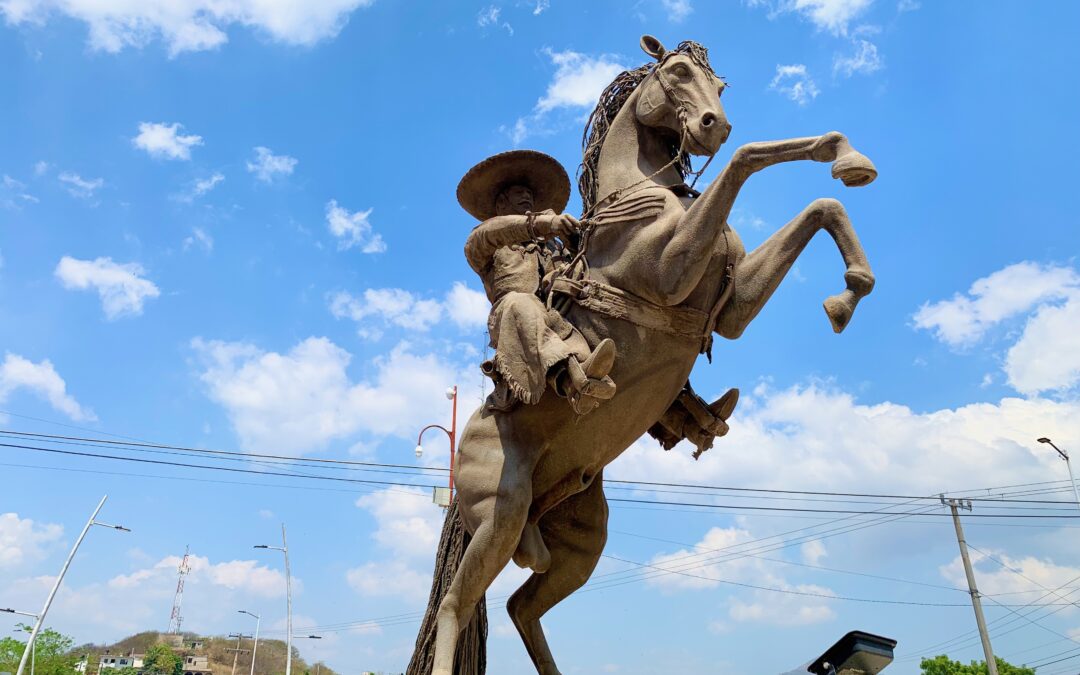
you just gotta love Mexico 🇲🇽
Peter, it was a pleasure meeting you at Sumidero Canyon. I’m learning a lot about local history and culture through your accounts. Safe travels!
Hi Paul. The pleasure was all mine. Travelling alone, it is great to bump into people occasionally, and for however briefly, share a few words. Hope the piece was ok and that you four continue to have a great trip. I’m down on the Costa Esmeralda now… heading for Metamoros. Best wishes — Peter